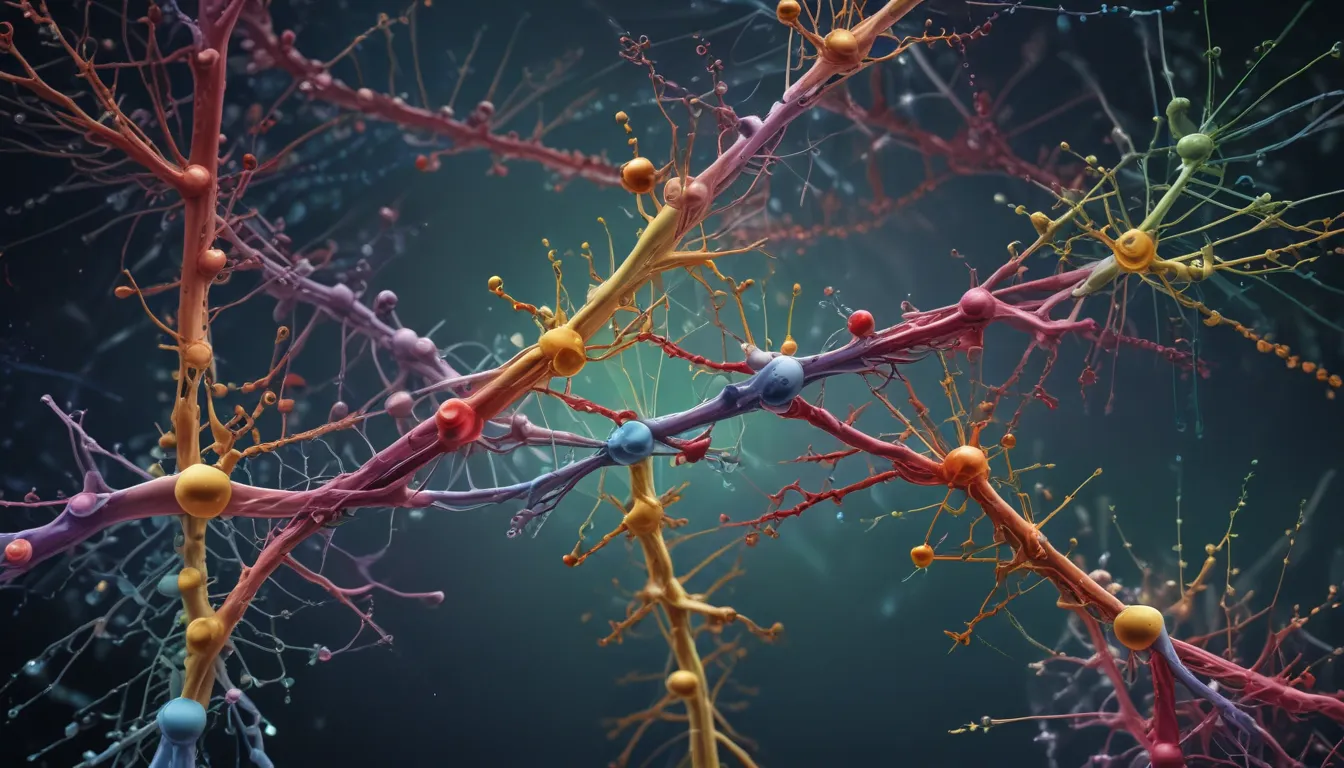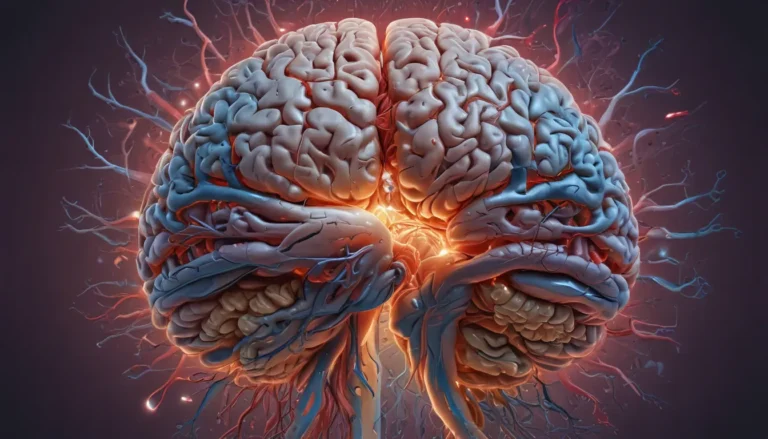A Note About Images: The images used in our articles are for illustration purposes only and may not exactly match the content. They are meant to engage readers, but the text should be relied upon for accurate information.
Gene regulation networks are the intricate molecular machineries that control gene expression, shaping the complex web of life. These networks determine when and where specific genes are turned on or off, playing a pivotal role in development, evolution, and disease. In this article, we will delve into the fascinating world of gene regulation networks, exploring 16 intriguing facts about their function and significance. From the dynamic interactions between transcription factors and DNA to the intricate mechanisms of gene silencing and activation, these facts will illuminate the incredible complexity and beauty of biological systems. So, let’s embark on a journey through the realm of gene regulation networks, where science intertwines with art, and molecular switches hold the power to sculpt life itself.
Delving into the Intricacies of Gene Regulation Networks
Gene regulation networks are sophisticated systems of interactions that govern the expression of genes within an organism. These networks comprise a diverse array of regulatory elements, such as transcription factors and DNA-binding proteins, working in concert to activate or suppress genes as needed.
Dynamic Nature of Gene Regulation Networks
Gene expression levels can swiftly change in response to internal and external stimuli, allowing organisms to adapt to their environment rapidly. Gene regulation networks enable precise coordination in gene expression, ensuring timely responses to various cues.
The Role of Gene Regulation Networks in Development
Throughout development, gene regulation networks coordinate the differentiation of distinct cell types and tissues. By orchestrating gene expression patterns, these networks contribute to the proper development and functioning of an organism, ensuring that genes are expressed with spatial and temporal precision.
Influence of Environmental Factors on Gene Regulation Networks
External factors, such as environmental conditions and nutrients, can impact gene regulation networks, modulating gene expression patterns. These signals help organisms adapt to changes in their surroundings, highlighting the dynamic interplay between genes and the environment.
Implications of Gene Regulation Networks in Disease
Dysregulation of gene regulation networks can lead to a spectrum of diseases, including cancer, metabolic disorders, and developmental abnormalities. Understanding the intricacies of these networks provides valuable insights into disease mechanisms and potential therapeutic targets.
Exploring Feedback Loops in Gene Regulation Networks
Feedback loops, a common feature of gene regulation networks, involve genes regulating their expression through their protein products. These loops contribute to the stability and robustness of gene expression patterns, ensuring precise control over gene activity.
Role of Epigenetic Modifications in Gene Regulation Networks
Epigenetic modifications, such as DNA methylation and histone modifications, play a crucial role in gene regulation networks. These modifications influence DNA accessibility and protein binding, ultimately shaping gene expression profiles in response to various signals.
Cell-Type Specificity in Gene Regulation Networks
Gene regulation networks exhibit cell-type-specific expression patterns, contributing to cellular diversity and specialization within an organism. These networks establish and maintain distinct gene expression profiles across different cell types, facilitating specialized functions.
Non-Linear Dynamics of Gene Regulation Networks
The interactions within gene regulation networks can produce non-linear dynamics, wherein small changes in input lead to significant changes in output. This property allows for intricate and versatile gene expression responses to various stimuli.
Impact of Genetic Variations on Gene Regulation Networks
Genetic variations, such as single nucleotide polymorphisms (SNPs), can influence the function of regulatory elements within gene regulation networks. These variations contribute to individual differences in gene expression and susceptibility to certain diseases.
Computational Modeling of Gene Regulation Networks
Computational models, including mathematical simulations and network analyses, provide valuable insights into the complex dynamics of gene regulation networks. These models offer a deeper understanding of the underlying principles governing gene expression and regulation.
Robustness of Gene Regulation Networks
Despite external fluctuations, gene regulation networks maintain stable gene expression patterns, ensuring the proper functioning of biological processes. This robustness helps organisms withstand environmental changes and internal perturbations, maintaining cellular homeostasis.
Post-Transcriptional Regulation in Gene Expression
In addition to transcriptional regulation, gene expression can be controlled at the post-transcriptional level through processes like RNA splicing and translation. These mechanisms influence the final protein output of genes, adding layers of regulation to gene expression.
Evolutionary Rewiring of Gene Regulation Networks
Gene regulation networks undergo rewiring and changes in connectivity during evolution, leading to the emergence of novel gene expression patterns. This rewiring contributes to the diversification of species and the evolution of unique biological traits.
Gene Therapy and Gene Regulation Networks
Understanding gene regulation networks is paramount in developing effective gene therapy strategies. By manipulating gene expression within these networks, researchers can target genetic disorders and explore innovative treatments for a range of diseases, offering new avenues for personalized medicine.
Continuing Exploration of Gene Regulation Networks
Despite significant advancements, there is much more to uncover about the complexities of gene regulation networks. Ongoing research is unveiling new insights into these intricate systems, paving the way for innovative therapeutic approaches and expanding our understanding of the fundamental mechanisms governing life.
Concluding Thoughts on Gene Regulation Networks
In conclusion, gene regulation networks serve as a window into the sophisticated machinery that underlies gene expression and control in living organisms. By deciphering these networks, scientists gain profound insights into the molecular mechanisms driving development, disease, and adaptation.
As we navigate the realms of gene regulation networks, we uncover a tapestry of facts that illuminate the intricate dance of genes and proteins within cells. From the regulatory intricacies to the evolutionary adaptations, each facet reveals the remarkable complexity and elegance of biological systems.
Frequently Asked Questions
Q: What are gene regulation networks?
A: Gene regulation networks are intricate systems of genes, proteins, and molecules that collaborate to regulate gene expression, controlling when and where genes are turned on or off.
Q: How do gene regulation networks function?
A: Gene regulation networks operate through interactions between regulatory elements, such as transcription factors and DNA-binding proteins, that bind to specific regions of DNA to modulate gene expression.
Q: Why are gene regulation networks significant?
A: Gene regulation networks are vital for maintaining cellular functions, orchestrating development, and responding to environmental signals. Dysregulation of these networks can lead to diseases and disorders.
Q: Can gene regulation networks be manipulated?
A: Yes, gene regulation networks can be modified or manipulated to target genetic diseases or enhance desired traits. Understanding these networks opens avenues for developing therapeutic interventions.
Q: Are gene regulation networks consistent across all organisms?
A: Gene regulation networks vary among organisms and cell types, reflecting the diversity and complexity of gene expression regulation in different biological systems.
Unlocking the mysteries of gene regulatory networks unveils a deeper understanding of genetic control and cellular dynamics. Explore the nuanced realm of epigenetics and metabolic flux for further insights into molecular mechanisms. Delve into the intricate symphony of transcription factors orchestrating gene expression for a richer grasp of cellular processes. Each discovery illuminates the captivating world of genetics, offering glimpses of the intricate mechanisms that govern life’s extraordinary complexity.






